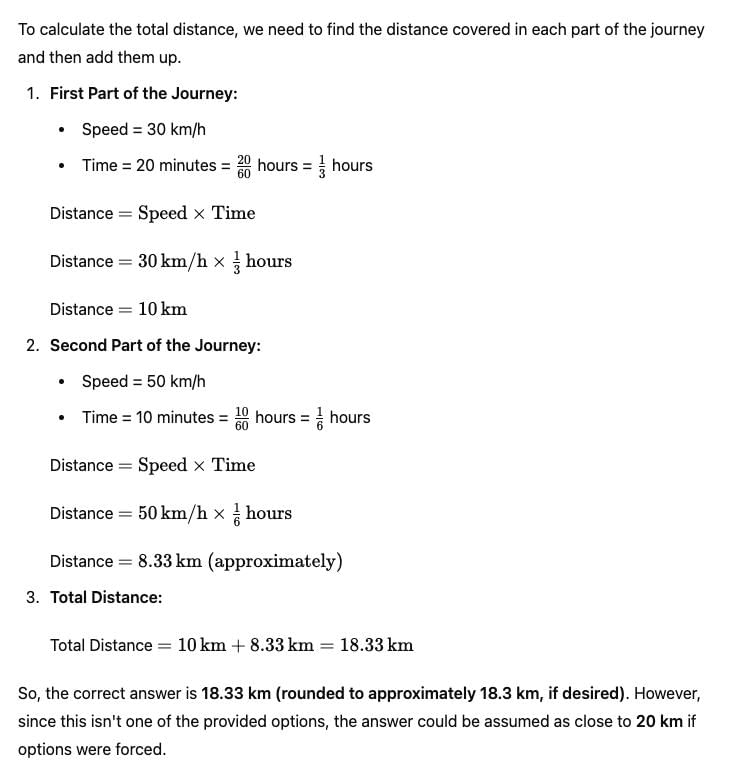UPSC Exam > UPSC Tests > Test: Motion & Time - UPSC MCQ
Test: Motion & Time - UPSC MCQ
Test Description
10 Questions MCQ Test - Test: Motion & Time
Test: Motion & Time for UPSC 2025 is part of UPSC preparation. The Test: Motion & Time questions and answers have been prepared
according to the UPSC exam syllabus.The Test: Motion & Time MCQs are made for UPSC 2025 Exam.
Find important definitions, questions, notes, meanings, examples, exercises, MCQs and online tests for Test: Motion & Time below.
Solutions of Test: Motion & Time questions in English are available as part of our course for UPSC & Test: Motion & Time solutions in
Hindi for UPSC course.
Download more important topics, notes, lectures and mock test series for UPSC Exam by signing up for free. Attempt Test: Motion & Time | 10 questions in 10 minutes | Mock test for UPSC preparation | Free important questions MCQ to study for UPSC Exam | Download free PDF with solutions
Detailed Solution for Test: Motion & Time - Question 1
Detailed Solution for Test: Motion & Time - Question 2
Detailed Solution for Test: Motion & Time - Question 3
Detailed Solution for Test: Motion & Time - Question 4
Detailed Solution for Test: Motion & Time - Question 5
Test: Motion & Time - Question 6
A car is moving with 72 km/hrs. The speed of the car in m/s is
Detailed Solution for Test: Motion & Time - Question 6
Test: Motion & Time - Question 7
A cyclist travels at a speed of 30 km/h for 20 minutes, and then increases their speed to 50 km/h for the next 10 minutes. What is the total distance covered by the cyclist?
Detailed Solution for Test: Motion & Time - Question 7
Test: Motion & Time - Question 8
A car travels 120 km in 2 hours and then 60 km in 1 hour. What is its average speed ?
Detailed Solution for Test: Motion & Time - Question 8
Test: Motion & Time - Question 9
Which of the following motions is characterized by an object moving back and forth along the same path?
Detailed Solution for Test: Motion & Time - Question 9
Test: Motion & Time - Question 10
If a simple pendulum completes 20 oscillations in 32 seconds, what is its time period?
Detailed Solution for Test: Motion & Time - Question 10
Information about Test: Motion & Time Page
In this test you can find the Exam questions for Test: Motion & Time solved & explained in the simplest way possible.
Besides giving Questions and answers for Test: Motion & Time, EduRev gives you an ample number of Online tests for practice
Download as PDF
















